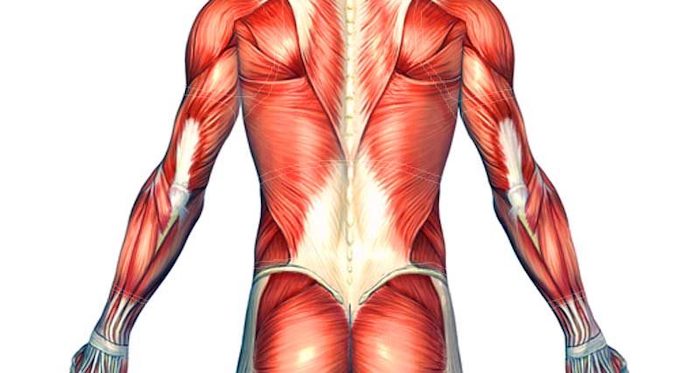
A muscle strain is a common cause of lower back pain and maybe localized to the right side of your lower back.
Muscle strains occur when a muscle is pulled beyond its normal limit, causing the muscle fibers to overstretch or have small, microscopic tears. While this type of injury is typically minor and heals without complications1, the pain may be severe and your back may be markedly stiff.
A back muscle strain is usually the result of an indirect injury1,2 such as from swinging a golf club or twisting the right side of your back to lift a child off the floor. Sometimes, you may also strain a tendon (part of the muscle that inserts into bone) along with the muscle.
Self-Care for Back Muscle Strain
To help relieve your symptoms, you can try any of the following at-home treatments for your lower right back muscle strain:
- Apply cold and heat. Applying cold therapy will help reduce inflammation, swelling, and pain that occurs immediately following your injury. Once the pain subsides, use heat therapy to dilate the blood vessels and stimulate more blood flow, providing oxygen and healing nutrients to the injured area.
- Try topical medication. Gently apply a pain-relieving gel or cream over your painful area. Topical medications contain salicylic acid and/or menthol that may help reduce your muscle pain. These medications can be purchased over the counter.
- Massage your back. A gentle massage can loosen tight muscles in your lower right back and provoke the release of pain-fighting hormones (endorphins).
- Gently move your back muscles. When your muscle is strained, the small blood vessels rupture, leading to an inadequate blood supply to the sore tissues.1 Additionally, if you rest your back without any movement, there will be lesser blood flow and oxygen reaching the injured tissues. Apply heat to warm up the muscles, then do light stretches to facilitate more blood supply and stimulate the formation of new blood capillaries in the muscle.
- Support your lumbar curve. Maintain your natural spinal alignment by using correct sitting, standing, and/or lying down posture. Adequate support for the inward curve in your lower spine will minimize stress on your injured back muscles and foster a better healing environment.
- Use a lumbar brace. If you feel severe pain and cannot move your back, try using a lumbar stabilizing brace for the first day or two after your injury. A brace will help prevent sudden movement and also keep your back supported.
- Walk as much as possible. Walking is an excellent way to help muscles recover. If you’re in a great deal of pain, you can try walking for just a few minutes at a time every hour, and gradually work up to longer walks.
- Try pool therapy. The exercise that is done in a warm pool sometimes called water therapy, maybe a good option if the pain and stiffness are severe. The buoyancy of the water provides support, the warmth of the pool is good for your muscles, and the effort of moving against the water all combine to give you an excellent workout without jarring your painful lower back. Just walking in a warm pool is also good for your back.
A back-muscle strain usually resolves within a few days to weeks. Sometimes, taking over-the-counter oral pain relievers may help when used alongside these treatments.
If you have severe pain that does not reduce from these treatments, continues to worsen, increases at night, or causes changes in your bowel and/or bladder control, or includes other troubling symptoms, consult a doctor immediately. A doctor can help rule out serious underlying conditions, such as tumors or cauda equina syndrome, and formulate an effective treatment plan.
Precision Pain Care and Rehabilitation has two convenient locations in Richmond Hill – Queens and New Hyde Park – Long Island. Call the Richmond Hill office at (718) 215-1888, or (516) 419-4480 for the Long Island office, to arrange an appointment with our Interventional Pain Management Specialist, Dr. Jeffrey Chacko.













